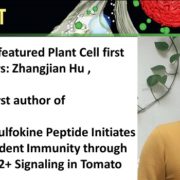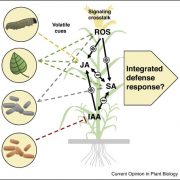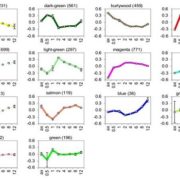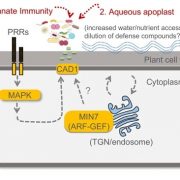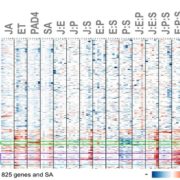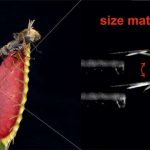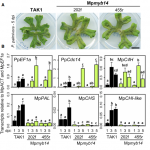A liverwort-Pseudomonas interaction reveals an ancient plant defensive mechanism (Curr Biol)
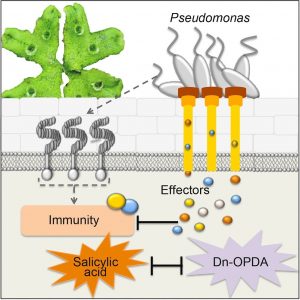 Plants are sessile organisms that have evolved sophisticated immune systems in defense of pathogens, thus maximizing the chance of survival. Most of our understanding of plant defenses comes from studies in angiosperms. Evolutionary molecular plant-microbe interactions (EvoMPMI) can reveal the origins of plant defenses, but have been limited by a lack of suitable pathosystems in in basal land plants. Recently Gimenez-Ibanez et al. uncovered an interaction between the bacterial pathogen P. syringae pv tomato (Pto) DC3000 and the liverwort Marchantia polumorpha. When exposed to Pto DC3000, M. polumorpha activates typical hallmarks of pattern-triggered immunity. Bacterial effectors such as AvrPtoA or AvrPtoB are necessary to for virulence, and the interaction depends on the genetic background of host and pathogen. This work shows that the microbe-plant interaction is ancient and highly conserved from early land plant to angiosperms, and sheds lights on novel defensive mechanism hidden by gene redundancy in later-diverged plants. In summary, these discoveries, along with that of Carella et al., provide novel experimental systems to study EvoMPMI, and help us understanding the co-evolution of plants and pathogens during land plant colonization. (Summarized by Nanxun Qin) Curr. Biol. 10.1016/j.cub.2019.05.079
Plants are sessile organisms that have evolved sophisticated immune systems in defense of pathogens, thus maximizing the chance of survival. Most of our understanding of plant defenses comes from studies in angiosperms. Evolutionary molecular plant-microbe interactions (EvoMPMI) can reveal the origins of plant defenses, but have been limited by a lack of suitable pathosystems in in basal land plants. Recently Gimenez-Ibanez et al. uncovered an interaction between the bacterial pathogen P. syringae pv tomato (Pto) DC3000 and the liverwort Marchantia polumorpha. When exposed to Pto DC3000, M. polumorpha activates typical hallmarks of pattern-triggered immunity. Bacterial effectors such as AvrPtoA or AvrPtoB are necessary to for virulence, and the interaction depends on the genetic background of host and pathogen. This work shows that the microbe-plant interaction is ancient and highly conserved from early land plant to angiosperms, and sheds lights on novel defensive mechanism hidden by gene redundancy in later-diverged plants. In summary, these discoveries, along with that of Carella et al., provide novel experimental systems to study EvoMPMI, and help us understanding the co-evolution of plants and pathogens during land plant colonization. (Summarized by Nanxun Qin) Curr. Biol. 10.1016/j.cub.2019.05.079


